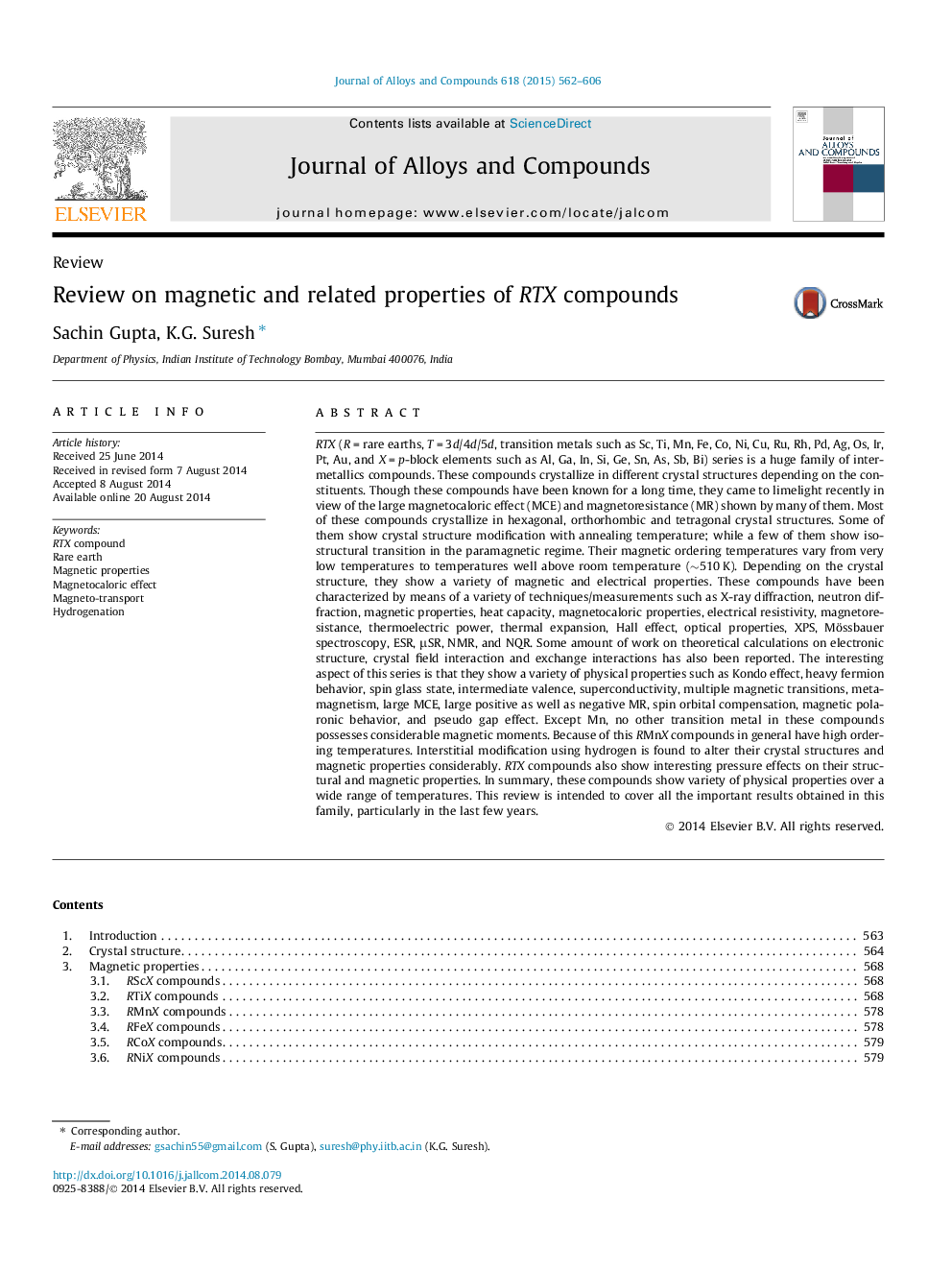| Article ID | Journal | Published Year | Pages | File Type |
|---|---|---|---|---|
| 1610403 | Journal of Alloys and Compounds | 2015 | 45 Pages |
RTX (R = rare earths, T = 3d/4d/5d, transition metals such as Sc, Ti, Mn, Fe, Co, Ni, Cu, Ru, Rh, Pd, Ag, Os, Ir, Pt, Au, and X = p-block elements such as Al, Ga, In, Si, Ge, Sn, As, Sb, Bi) series is a huge family of intermetallics compounds. These compounds crystallize in different crystal structures depending on the constituents. Though these compounds have been known for a long time, they came to limelight recently in view of the large magnetocaloric effect (MCE) and magnetoresistance (MR) shown by many of them. Most of these compounds crystallize in hexagonal, orthorhombic and tetragonal crystal structures. Some of them show crystal structure modification with annealing temperature; while a few of them show iso-structural transition in the paramagnetic regime. Their magnetic ordering temperatures vary from very low temperatures to temperatures well above room temperature (∼510 K). Depending on the crystal structure, they show a variety of magnetic and electrical properties. These compounds have been characterized by means of a variety of techniques/measurements such as X-ray diffraction, neutron diffraction, magnetic properties, heat capacity, magnetocaloric properties, electrical resistivity, magnetoresistance, thermoelectric power, thermal expansion, Hall effect, optical properties, XPS, Mössbauer spectroscopy, ESR, μSR, NMR, and NQR. Some amount of work on theoretical calculations on electronic structure, crystal field interaction and exchange interactions has also been reported. The interesting aspect of this series is that they show a variety of physical properties such as Kondo effect, heavy fermion behavior, spin glass state, intermediate valence, superconductivity, multiple magnetic transitions, metamagnetism, large MCE, large positive as well as negative MR, spin orbital compensation, magnetic polaronic behavior, and pseudo gap effect. Except Mn, no other transition metal in these compounds possesses considerable magnetic moments. Because of this RMnX compounds in general have high ordering temperatures. Interstitial modification using hydrogen is found to alter their crystal structures and magnetic properties considerably. RTX compounds also show interesting pressure effects on their structural and magnetic properties. In summary, these compounds show variety of physical properties over a wide range of temperatures. This review is intended to cover all the important results obtained in this family, particularly in the last few years.
